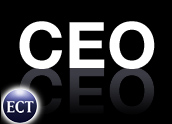
Although outsourcing has cast a long shadow over many IT professions and functions, there are glimmers of sunlight for U.S. employees involved in certain aspects of the computing industry.
For example, although it has been affected by outsourcing to some degree, research and development retains much of its shimmer.
“Most companies are reluctant to outsource IT activities related to R&D for new product development,” said Lance Travis, vice president of outsourcing strategies at Boston-based AMR Research, in an interview with the E-Commerce Times. “They consider R&D the crown jewels of the company and don’t want to lose them.”
In fact, when AMR Research conducted a study last year, it found that 50 percent of R&D groups in the auto, high-tech, aerospace and defense industries had no interest in outsourcing IT support; just 12 percent said they were outsourcing any IT projects related to R&D. Companies in the technology sector exhibited the least interest, according to Travis: Just 4 percent said they do any outsourcing of this function.
Internal Growth
Even when companies do consider outsourcing functions that require sharing proprietary or extremely sensitive data, they generally look within the United States — or at a company that melds both onshore and offshore services, many industry executives said.
“Because the biggest factor in most R&D groups about outsourcing is risk, they look to reduce risk by going with a global delivery model — for example, split between on- and offshore,” Travis said.
That has been the case for Stout Systems, an Ann Arbor, Michigan-based company that develops contract and outsourced software and embedded-systems projects for a wide variety of clients, including the big three automotive companies and several retailers, owner and president John Stout told the E-Commerce Times. “Most of our clients with whom I am experienced would not outsource sensitive proprietary information overseas because of a perceived lack of security,” he said. “By far, most of our competitors are U.S.-based.”
Splitting the Bill
Likewise, Altoros Systems, a global software development and consulting firm, has seen business increase dramatically since it set up U.S. offices in Tampa, Florida, and Chicopee, Massachusetts, said Renat Khasanshyn, director of North American operations for the company, which has headquarters in Minsk, Belarus.
“The fact we’re located in the United States became one of the reasons our current clients choose us,” Khasanshyn told the E-Commerce Times. “From a client’s perspective, it’s very difficult to believe a company outside the States. The client is not assured, if something goes wrong. What should I do? Which court do I go to? It’s very important for the client to have a service provider in the United States.”
If cost is a development client’s most important concern, then Altoros sends approximately 90 percent of the code-writing work to Minsk, Khasanshyn said, while doing just 10 percent on-site. If, on the other hand, time-to-market is the main concern, the developer may keep about 30 percent of the work inside the United States while turning over 70 percent to Minsk. “This way, we can achieve almost a 24-hour development cycle,” he said.
“I would say it’s not possible to do 100 percent offshore,” Khasanshyn noted. “If you do [R&D outsourcing], you have to manage it. It’s a way to decrease costs. It’s not a way to eliminate costs.”
The Flip Side
Also, there are signs that offshore outsourcing may not always live up to its reputation, Stout noted.
“The only factor I know that is pulling development work out of the U.S. is cost. But recently, we have seen articles that show the cost savings of developing software overseas is often not nearly what the originating company believed it would be,” he said. “The requirements-gathering and design work is almost exclusively done at home, because it is found that these functions do not outsource overseas effectively.”
Still, the success Microsoft, Intel and Motorola, among others, have found by shifting important product development to their Chinese offices could presage a shift by other organizations, said Tom Banning, a vice president at Bain & Co. Bain is a global business consulting firm that has worked with more than 2,500 multinational clients around the world.
“Bain & Company believes that over time, these initiatives will likely expand into more basic forms of research,” Banning said. “It is now becoming increasingly conceivable that companies will globalize their R&D, ultimately shifting upwards of 40 percent offshore to captive operations in non-headquarters countries or to appropriate outsourcing contractors.”
And as technology and business processes become increasingly sophisticated and proven, U.S. companies may become even more willing to look outside borders. “At Bain, we foresee that new innovation will certainly continue to occur in the U.S., but less at the individual product level and more on the higher domain of business models, service industry concepts and global value chains,” Banning said.
Security Blanket?
It seems, therefore, that one of the most secure careers for prospective job-hunters is in managing outsourcing relationships.
Barring that, individuals who are more interested in a hands-on technology profession can take heart that — despite some well-covered successes by such companies as SAP, Oracle and IBM — the bulk of R&D work appears to be safe, for a while at least, in the United States. Other jobs also may be relatively resistant to outsourcing.
“I believe that the jobs that are export-proof are jobs that require direct client contact,” Allen Stern, managing editor of OOCenter.com, an outsourcing Web site operated by the same group that runs HTMLCenter.com, told the E-Commerce Times. “For example, client account managers who need to be able to handle matters locally will most likely not be offshore outsourced. Another area in which exporting is not a viable option is Web design. While the mundane production graphics tasks can be exported, it is next to impossible to export the initial design phase. This is an area in which it is imperative that a local designer understand the client’s needs and translate their needs into designs that will help the client reach their goals.”
Time for a New Challenge
Job security should not necessarily be the ultimate goal of U.S.-based workers, however, Banning noted.
“The best U.S.-based talent must challenge itself to think more comprehensively about how entire businesses and entire industries operate and then use these insights to build new companies and new industries that offer even greater value for the participants,” he said.
“Simultaneously, with more skills available at a more affordable cost on a global basis, we can actually design more efficiency into these new concepts. This is not to discount any individual hardships encountered along the way,” he said. “But ultimately, thoughtful macro-design will provide more economic opportunities for the U.S., not protectionist barriers.”































































































Social Media
See all Social Media